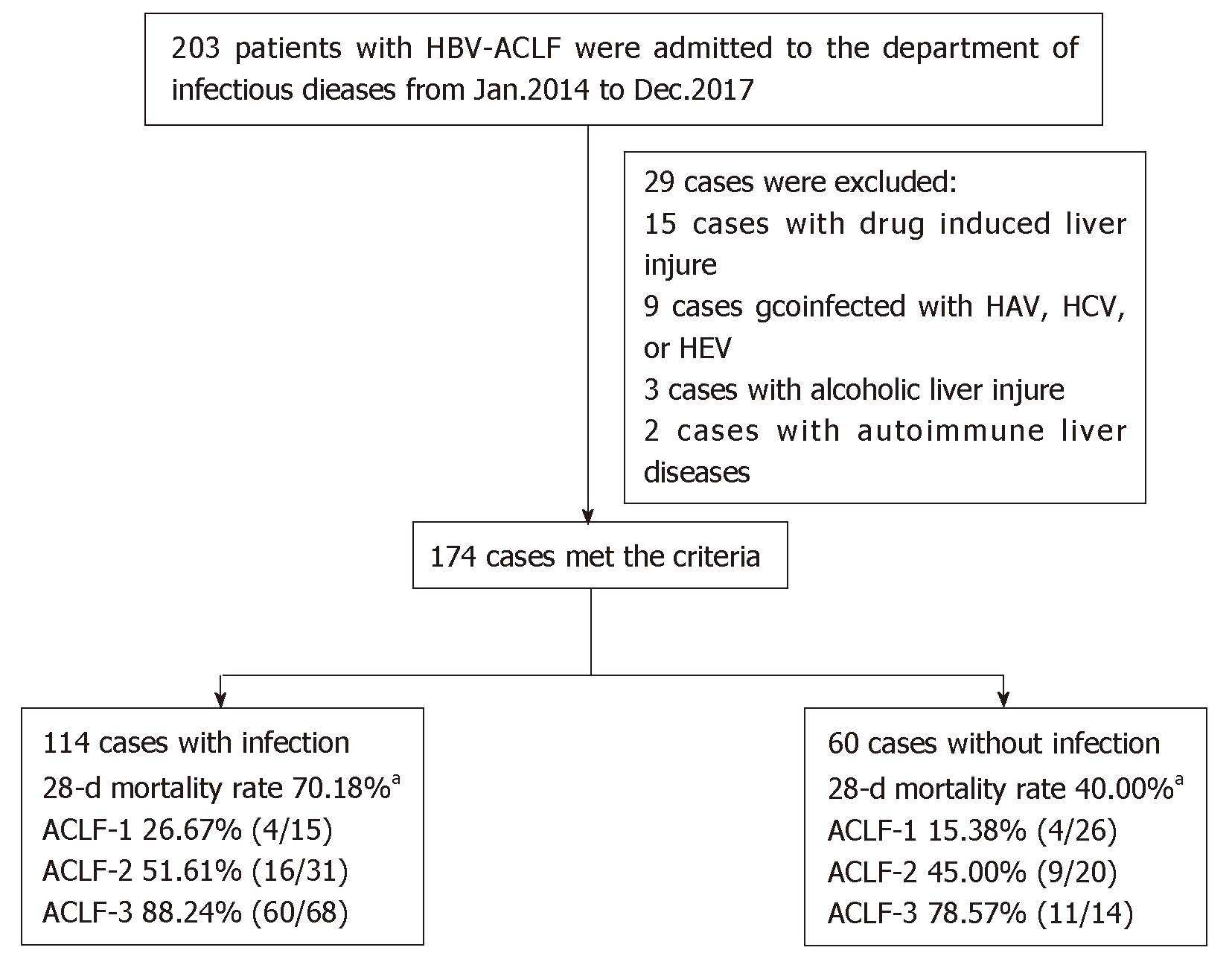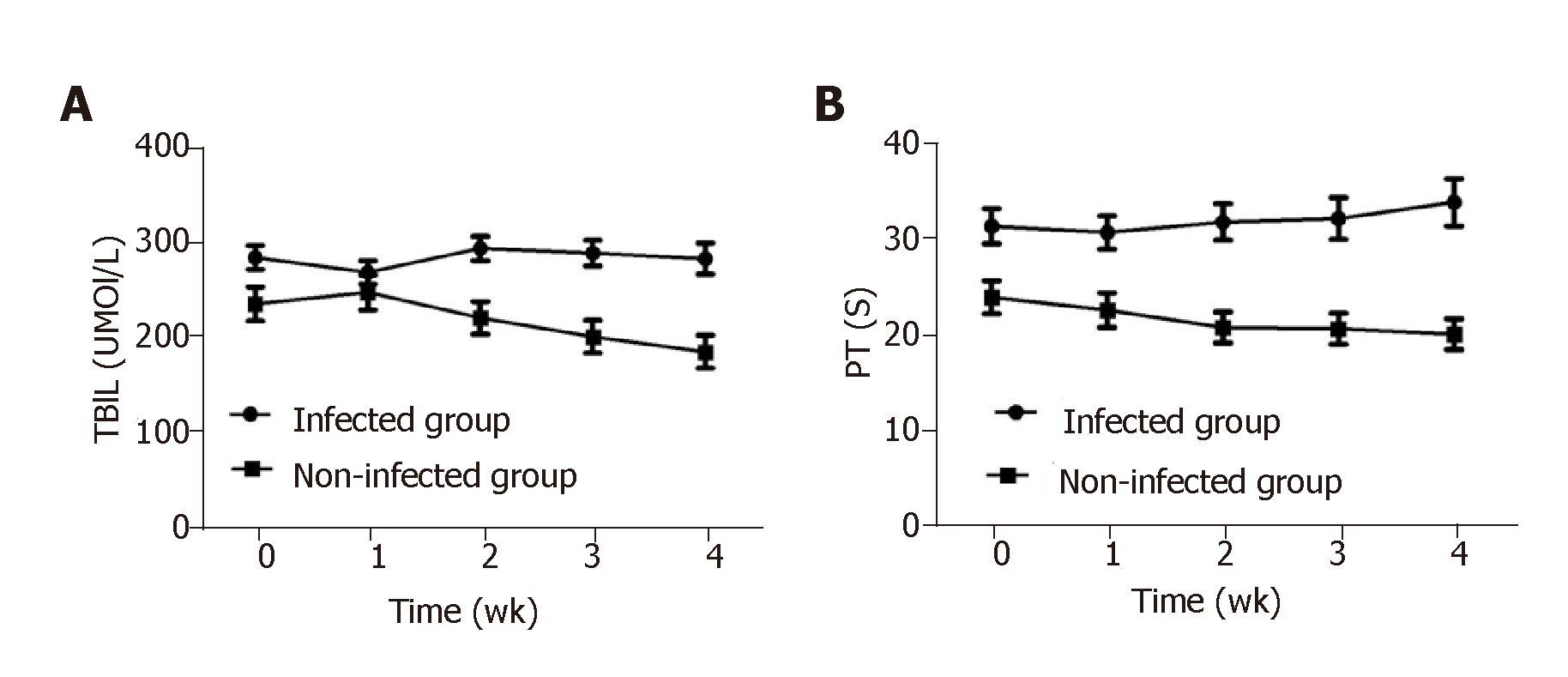Copyright
©The Author(s) 2019.
World J Clin Cases. Aug 26, 2019; 7(16): 2204-2216
Published online Aug 26, 2019. doi: 10.12998/wjcc.v7.i16.2204
Published online Aug 26, 2019. doi: 10.12998/wjcc.v7.i16.2204
Figure 1 The recruitment and inclusion of patients with hepatitis B virus-related acute-on-chronic liver failure.
aP < 0.05 compared with those without infections. HBV-ACLF: Hepatitis B virus-related acute-on-chronic liver failure; HAV: Hepatitis A virus; HCV: Hepatitis C virus; HEV: Hepatitis E virus; ACLF: Acute-on-chronic liver failure.
Figure 2 Receiver operating characteristic curve for assessing risk factors for bacterial and/or fungal infections in patients with hepatitis B virus-related acute-on-chronic liver failure.
ROC: Receiver operating characteristic; HBV-ACLF: Hepatitis B virus-related acute-on-chronic liver failure; TBIL: Total bilirubin; PT: Prothrombin time; WBC: White blood cell; NE%: Percentage of neutrophils; ALT: Alanine aminotransferase; AST: Aspartate aminotransferase; ALB: Albumin.
Figure 3 Kinetics of serum total bilirubin and prothrombin time in hepatitis B virus-related acute-on-chronic liver failure patients during hospital stay.
A and B: Serum total bilirubin (A) and prothrombin time (B) in hepatitis B virus-related acute-on-chronic liver failure patients at admission, week 1, week 2, and week 4. TBIL: Total bilirubin; PT: Prothrombin time.
- Citation: Wang C, Ma DQ, Luo S, Wang CM, Ding DP, Tian YY, Ao KJ, Zhang YH, Chen Y, Meng ZJ. Incidence of infectious complications is associated with a high mortality in patients with hepatitis B virus-related acute-on-chronic liver failure. World J Clin Cases 2019; 7(16): 2204-2216
- URL: https://www.wjgnet.com/2307-8960/full/v7/i16/2204.htm
- DOI: https://dx.doi.org/10.12998/wjcc.v7.i16.2204











